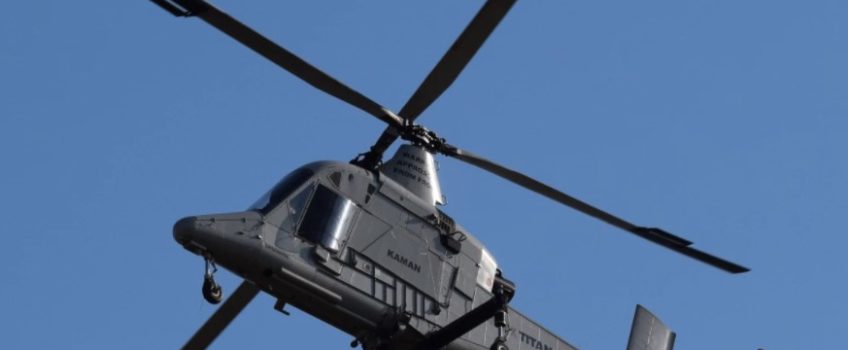
We are in for an exciting time in aviation as the world’s first unmanned helicopter has taken flight. Introducing the K-MAX TITAN from Kaman Air Vehicles, a division of Kaman Aerospace Corporation. They’ve successfully launched a maiden flight of the world’s first heavy-lift unmanned helicopter for the commercial market. Keep reading as you’ll want to watch the fascinating video from Kaman.
The military cargo K-Max unmanned helicopter has been hard at work for almost a decade flying supplies to U.S. armed forces in Afghanistan. Since the resounding success on the military front, Kaman decided to release a commercial version to the market and it could set the tone for the future of unmanned helicopter transport.
Who Is Kaman Aerospace Corporation?
Kaman Corporation was founded in 1945 by aviation pioneer Charles H. Kaman. The company’s headquarters are in Bloomfield, Connecticut from where they conduct business in the aerospace, defence, industrial and medical sectors. Kaman produces and markets proprietary aircraft components including the following:
- super precision, miniature ball bearings
- proprietary spring energized seals
- springs and contacts
- complex metallic and composite aerostructures for commercial, military and general aviation fixed and rotary wing aircraft
- safe and arming solutions for missile and bomb systems for the U.S. and allied militaries
- subcontract helicopter work
- restoration, modification and support of the SH-2G Super Seasprite maritime helicopters
- manufacture and support K-MAX® manned and unmanned medium-to-heavy lift helicopters
You can find more information at kaman.com
K-MAX TITAN Unmanned Helicopter Specifications
The K-MAX TITAN uses a low-maintenance counter-rotating rotor system of epic proportions. It’s been specially designed for maximum lift efficiency to ensure a carrying capacity of up to 2,722 kg (6,000 lb) of cargo using a cable and hook system.
This is a fascinating development in the aviation world as many are calling the new heavy-lift unmanned helicopter the delivery drone revolution. Whilst the current logistics drones from EHang is certainly an impressive feat of engineering, it only has a 200 kg (440 lb) capacity. These short-to-medium haul machines can’t compete with the impressive 1,850-km (1,150-mile) range of the K-Max.
“With a focus on enabling safety and operational efficiency, the proprietary K-MAX TITAN system will redefine the helicopter external lift market by increasing future mission capabilities in any location and any type of weather,” said a company representative.
Unmanned Helicopter Missions
Thanks to the TITAN system, unmanned helicopter missions can take place in adverse conditions and risky environments. The system allows operators to run operations that would otherwise be too dangerous for people.
Robots and machines don’t sleep so that means the K-MAX TITAN unmanned helicopter can run repetitive routes with the potential of saving operators tons of money. Kaman Air Vehicles confirmed that the TITAN system will be available as a retrofit for any existing K-MAX helicopters and will be included as an option for new purchases as well.
According to Roger Wassmuth, Senior Director of Business Development for Kaman’s Air Vehicles division: “We are excited to reach this major milestone on K-MAX TITAN. Watching this capability take to the skies and knowing that we are going to solve some of the toughest challenges for our commercial and military customers”.
Recommended: ‘Could Electric Drones Change The Future Of Aviation?’
Final Thoughts
Autonomy presents an opportunity to make air travel safer while expanding the capabilities of aircraft through augmenting onboard decision systems. Over time, these systems will be able to make rational decisions in the face of unexpected or unusual events. The future of autonomous, unmanned helicopters and other craft may be closer than many of us realise.
Tiny drones are already being used for surveying, inspections and security among other tasks. Larger drones can deliver packages, urgent medical supplies or disaster relief packages to remote areas with minimal risk. The technology might even change transportation as we know it with small, electrically propelled rotorcraft becoming the future urban taxi without a pilot.
For more fascinating updates on all things technology, engineering and manufacturing, follow our blog and join the conversation on social media. You can find us on Twitter, Facebook, YouTube or LinkedIn and remember to use the hashtag #PRVtech.


 Mail:
Mail: 



